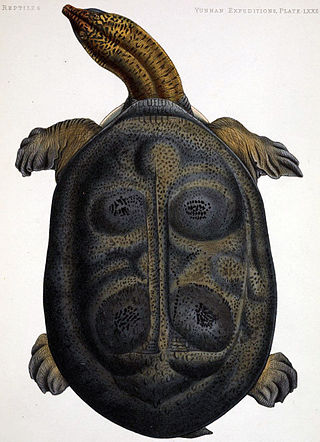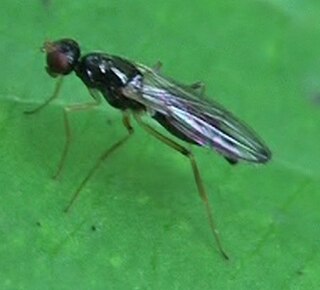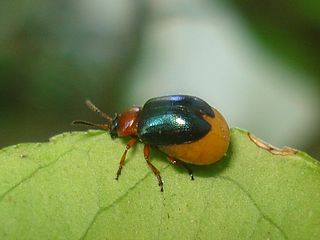
Formosa Province is a province in northeastern Argentina, part of the Gran Chaco Region. Formosa's northeast end touches Asunción, Paraguay, and the province borders the provinces of Chaco and Salta to its south and west, respectively. The capital is Formosa.

Dicentra, known collectively as the bleeding-hearts, is a genus containing eight species of herbaceous flowering perennial plants with unique, "heart"-shaped flowers and finely divided foliage. The species are, primarily, native to North America, although several are found in temperate East Asia.

Samuel Goldwyn Studio was the name that Samuel Goldwyn used to refer to the lot located on the corner of Formosa Avenue and Santa Monica Boulevard in West Hollywood, California, as well as the offices and stages that his company, Samuel Goldwyn Productions, rented there during the 1920s and 1930s. At various times, the location was also known as Pickford–Fairbanks Studios, the United Artists Studio, Warner Hollywood Studios, and its name since 1999, The Lot at Formosa.

Dicentra formosa is a species of flowering plant in the poppy family, Papaveraceae. With its fern-like foliage and inflorescence of drooping pink, purple, yellow or cream "hearts", this species is native to the United States' Pacific Northwest and West Coast of North America.

The Burmese peacock softshell turtle is a species of softshell turtle in the Trionychidae family. It is one of five species in the genus Nilssonia.

The Strongylophthalmyiidae are a small family of about 80 species of slender, long-legged flies, the majority of which occur in the Oriental and Australasian regions. They are divided into two genera, the monotypic Southeast Asian genus Nartshukia Shatalkin, 1993 and Strongylophthalmyia Heller, 1902. The relationships of the group are obscure; formerly the genus Strongylophthalmyia was classified with the Psilidae, and some recent classifications place it within the Tanypezidae. Little is known of their biology, but many species seem to be associated with rotting bark.

The queen coris, also known as the sand wrasse, Queen coris wrasse, Formosan coris, Formosa coris wrasse, Formosa wrasse, Indian Ocean wrasse or Indian sand wrasse, is a species of wrasse native to the Indian Ocean from the Red Sea and the coast of east Africa to Sri Lanka. This species appears in the aquarium trade due to its vibrant colors. A special feature about this species is how much they change from juvenile to adult form, in color, behaviour, and diet.

Gastrophysa is a genus of beetles in the family Chrysomelidae, in which the females typically exhibit swollen, membranous abdomens, a condition known as physogastrism.

Pinguicula macroceras, the California butterwort or horned butterwort, is a species of perennial carnivorous herb that is native to the North American Pacific coast, as well as other select distributions in Canada, Russia, Japan, and the United States.[3] [7] Common names include California butterwort, horned butterwort and butterwort. Pinguicula macroceras belongs to the genus Pinguicula and the family Lentibulariaceae.

Mycetophilinae is a subfamily of fungus gnats in the family Mycetophilidae. There are more than 30 genera and 2,000 described species in Mycetophilinae. There are two tribes, Exechiini and Mycetophilini.

Haltichella is a genus of chalcidid wasps in the family Chalcididae. There are at least 20 described species in Haltichella.
Rutela formosa, the handsome flower scarab, is a species of shining leaf chafer in the family of beetles known as Scarabaeidae.

Limnophila macrocera is a species of limoniid crane fly in the family Limoniidae.

Cerotainia is a genus of robber flies in the family Asilidae. There are at least 30 described species in Cerotainia.

Macrocera is a genus of predatory fungus gnats in the family Keroplatidae. There are at least 190 described species in Macrocera.
Paleoplatyura is a genus of predatory fungus gnats in the family Keroplatidae. There are about seven described species in Paleoplatyura. Fossil species are known from the mid-Cretaceous Burmese amber of Myanmar, dating to around 100 million years ago.
Echthodopa formosa is a species of robber flies in the family Asilidae.
Nephrotoma macrocera is a species of large crane fly in the family Tipulidae.
Cerotainia macrocera is a species of robber flies in the family Asilidae.













